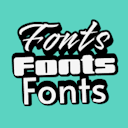Product
Templates
Resources
Company
Home
Blog
AI Graphic Design
AI prompt writing tips: Fix common AI prompt issues
AI prompt writing tips: Fix common AI prompt issues

Creating images with an AI image generator can be a powerful way to bring creative ideas to life, but generating exactly what you envision isn’t always straightforward. Sometimes, you’ll receive unexpected elements or details. Sometimes you may experience inaccuracies such as proportions or spacial relationships. This guide will walk you through common prompt writing issues and provide AI prompt writing tips to avoid them.
Plus, we’ll show you how to use a handy tool to remove unwanted elements from AI images - the erase and fill tool - to improve your results.
We have a special offer to help you get started with these AI prompt writing tips: Sign up for our newsletter and we’ll send you a promo code for 25% off a Kittl Pro subscription!
*See terms at the bottom of this page.
Table of contents
10 common AI image generation issues
The output of AI models relies heavily on the input; this is your prompt. Our guide to writing effective AI prompts, shares the four core building blocks of a good AI prompt. If you don’t follow these four key strategies, your AI tool may produce inaccurate or generic results. This is because the model will try to “guess,” adding things you may not have intended due to missing information.
Along with knowing the basics of how to write effective AI prompts, you can use this list of AI prompt writing tips that address specific common issues that may occur when using AI image generators.
Learn more about how to write a good AI prompt with our how-to guide!
Here are ten of the most common issues users experience with AI image generation prompts - we’ll explore each of them in-depth below and share the AI prompt writing tips and solutions to help you better communicate with your AI model:
1. Unwanted details
AI can sometimes misinterpret descriptions, introducing irrelevant objects or styles into your generation. This could be due to too much information that confuses the model or too little information that leaves room for the model to fill in the blanks.
2. Overly complex scenes
Long, multi-layered prompts can overwhelm the model, leading to cluttered compositions.
3. Difficulty with realism
Details that seem realistic to humans, like shadows or certain textures, might not appear accurately in AI-generated images.
4. Unwanted styles
AI models may sometimes produce results in styles that don’t match the user’s vision. This can happen if the style isn’t specified clearly or the prompt combines conflicting styles - such as requesting both “photo-realistic” and “abstract” elements. Mixing styles can confuse the AI, resulting in images that don’t meet expectations.
5. Lack of context or specificity
Vague prompts like "a cat" or "a cityscape" often produce generic results. Without enough context (e.g., "a grey tabby cat in a vintage-style armchair" or "a futuristic cityscape at sunset"), AI can struggle to deliver outputs that meet specific creative visions.
6. Trouble with perspective and proportion
AI can misinterpret spatial relationships, leading to odd perspectives or proportions, such as hands that are too large or buildings at odd angles.
7. Difficulty with anatomy
Generative AI can often struggle with human and animal forms, especially in complex poses or multiple figures. Unusual finger counts, odd limb shapes, or misplaced facial features are common issues. To mitigate this, be as specific as possible with the pose, angle, and framing.
For more lifelike depictions, specify “photorealistic” in your prompt. This can lead to a drastic difference in image style, as seen in the AI generations we created below! Our AI Prompt Guide explains how we did this - Check it out for more prompt writing tips!


8. Inaccurate representation of text
When text is requested in an image, AI may generate symbols or distorted letters rather than readable words.
9. Misinterpretation of adjectives
AI may interpret descriptive words in unexpected ways. For example, using the word "dark" to describe a somber mood may result in low lighting.
10. Difficulty combining multiple subjects
Including multiple subjects in a single prompt can lead to unintended interactions, like overlapping or unnatural relationships between subjects. For example, a prompt such as "a cat and dog with butterflies and flowers in a garden" doesn’t specify a clear subject.
AI prompt writing tips to avoid common image generation issues
Creating effective AI prompts for image generation takes a little practice. Still, with a few adjustments, you can solve the common challenges listed above and get images that better match your vision. Here’s how to tackle each of these issues with practical prompt-writing tips:
1. Unwanted details
Problem: AI includes irrelevant objects or styles that weren’t intended.
Solution: To prevent unwanted details, use clear and concise descriptions that highlight only what you want to see. Avoid vague adjectives or unrelated descriptors that might confuse the AI. Additionally, use negative prompts (e.g., “no cars,” “without people”) to specify what should not be included. For example:
Example: Instead of “a vintage-style cafe,” try something such as “a rustic coffee shop interior with wooden tables, no customers, in a warm, inviting style.” The specific details in this prompt combined with the negative request “no customers” will generate a more precise image.

AI prompt: “A vintage-style cafe”

AI prompt: “A rustic coffee shop interior with wooden tables, no customers, in a warm, inviting style.”
2. Overly complex scenes
Problem: Long, multi-layered prompts can overwhelm the AI, leading to cluttered images where key elements are lost.
Solution: Break complex scenes down into essential components, focusing on the main subject first. If you want multiple elements, separate primary subjects from secondary details, and specify the layout or depth. This can be extremely difficult, so do your best to lay out your scene as strategically and simply as possible. For instance:
Example: Rather than “a bustling city with many skyscrapers, crowds, and various shops,” pick a focus point. We can predict that a city street will be a complex scene for any AI model due to numerous overlapping elements. So we want to be precise with our language.
Focusing on the city, let's change our prompt to “a modern street with a solid traffic lane marker in the middle, and no additional traffic lane markers or lines. The street is nestled between modern-style buildings. The street has a few blurred cars on it. Groups of people with their faces turned away are walking on the sidewalks, their faces are not visible. In the distance, tall skyscrapers are blurred near the horizon, adding a sense of depth to the scene. The atmosphere is lively yet relaxed, with warm natural lighting illuminating the storefronts and sidewalks. Photorealistic, high-resolution.” Here's what this looks like:

If you shift your focus to the people, your prompt could adjust to “side profile of a group of people walking along a crosswalk on a bustling city street, backlit by an early morning sun, casting shadows on the ground. Behind the people, blurred skyscrapers fade into a sunny day, creating a sense of depth in the background. Crosswalk lines are clear, extending horizontally across the scene. 4k, photorealistic, aerial sky view.” Here's what this can look like:

3. Difficulty with realism
Problem: AI might not fully capture realistic details, like accurate shadows or textures.
Solution: Specify lighting and texture in concrete terms. For shadows, use phrases like “soft shadows to the left” or “gentle reflections on a glossy surface.” For textures, use adjectives like “rough stone wall” or “smooth leather couch” to guide the AI’s interpretation. For example:
Example: Instead of “a well-lit forest scene,” specify “a forest with soft sunlight filtering through the trees, casting spotted shadows on the forest floor.”
4. Unwanted styles
Problem: Sometimes, the AI generates an unexpected style. This is often because the prompt combines conflicting styles or leaves style unspecified.
Solution: Be intentional about your desired style and avoid mixing contradictory styles in one prompt. If you want a specific look, be sure to describe it clearly. For example, choose either “photo-realistic” or “abstract,” not both. To reinforce a certain style, include relevant era or art movement keywords, like “surrealist,” “vintage 80s,” or “watercolor.” Try this approach:
Example: If your prompt specifies a style such as “an abstract vase of flowers,” don’t pair it with a contradicting preset style such as “photography.” This may generate an image that’s more realistic than abstract. Instead, consider the preset style that best aligns with your description and desired outcome. This takes careful consideration.
For example, if you want an image that reflects a painterly quality, you could use the prompt “a painted vase of flowers with soft brushstrokes and muted colors, in a dreamlike, abstract style” and select the “oil painting” preset in Kittl.
Using the same AI prompt that created the images above, we created the AI generation below in "anime" style instead of "photography. Learn more about this process in our Prompt Writing Guide!

5. Lack of context or specificity
Problem: Vague prompts can produce generic or uninspired images.
Solution: We spoke with our Senior AI Product Manager about what to include in an effective AI prompt. Here’s what he had to say:
You should consider the subject, the scene, the style, any aesthetics like lighting, quality, pose, and so on….Structure the prompt as a series of instructions, defining each element you want to see.
”Simon Turner, Senior AI Product Manager
So to avoid generic imagery, be sure to include specific details in your prompt. Identify the subject, setting, mood, and style to bring out the unique elements you want. Think of it like telling a story to help the AI visualize your concept. For example:
Example: Rather than “a cat,” try “a gray tabby cat curled up in a vintage armchair, in a cozy, warmly lit room with wooden floors.”
6. Trouble with perspective and proportion
Problem: The AI may interpret spatial relationships oddly, resulting in disproportionate objects or unusual perspectives.
Solution: Guide the AI by describing the desired perspective and proportions. Use terms like “close-up,” “from a distance,” or “bird’s-eye view” to clarify. Phrases like “foreground,” “background,” or “centered” can also help align compositions. For example:
Example: Instead of “a person in front of a building,” try “a close-up of a person standing at the entrance of a tall building, from a low angle.”
7. Difficulty with human anatomy
Problem: AI often struggles with human anatomy, especially with complex poses or facial details.
Solution: To improve accuracy, describe the pose and position as clearly as possible, and focus on simple poses. If the scene includes multiple people, give each a role (e.g., “person in the foreground, others in the background”). For instance:
Example: Rather than “a group of people in various poses,” specify “a person standing in profile with arms crossed, others walking casually in the background.”
8. Inaccurate representation of text
Problem: The AI may generate distorted text or symbols when asked to include words.
Solution: To avoid unusable text, request “text-free” images. For essential text, consider adding it manually after the image is generated.
Example: Instead of “a poster with text saying "Welcome," say “a vintage poster with a central blank space for text, no words on the image.”
9. Misinterpretation of adjectives
Problem: Descriptive words can have unintended meanings (e.g., “dark” might change lighting rather than mood).
Solution: Describe both the adjective and its intended effect to avoid misinterpretation. Use descriptive combinations like “dark atmosphere with soft lighting” or “vibrant colors with natural sunlight” to clarify your intent. Here’s an example:
Example: Rather than “a dark forest,” specify “a forest scene with dim lighting and a moody, mysterious atmosphere.”
10. Difficulty combining multiple subjects
Problem: Multiple subjects in one prompt can lead to awkward overlaps or unnatural interactions.
Solution: Separate each subject’s role and position to give clarity on spacing and relationships. For prompts with several elements, order subjects by importance or proximity (e.g., “foreground,” “background”) to reduce confusion. For example:
Example: Instead of “a dog and cat playing in a garden with butterflies,” try “a dog running on the grass, a cat sitting on a bench nearby, and butterflies flying around.”
Tips for clearer, more effective prompts
Writing precise AI prompts will help you avoid unwanted outcomes with image generation. This will help reduce the need for regenerations and edits! In our guide to AI prompt writing, we share the four building blocks of how to write an effective AI prompt. Here are two of the core strategies to make prompts more efficient:
Be specific
Clear, concise details help the AI understand what’s essential in your vision. For instance, rather than saying “a dog in the park,” try “a brown and white spotted pit bull dog in the park, running across green grass towards the viewer on a crisp, autumn day. Cheerful, blue skies, with some birds flying in the distance, orange, autumnal trees are scattered around the park, old town city buildings are behind the trees at the horizon line.”
Use descriptive language
Terms like “distance,” “autumnal,” or “horizon line” will add depth to your description and direct the model toward the exact image you envision.
By following all four strategies in this guide you can stop creating generic images - instead generating unique, highly detailed images. A generation of “a dog in the park” can level up from this:

To this:

Learn the four strategies for writing good AI prompts - including examples with images - that created these images with our AI Prompt Writing Guide.
Quick-fix solution for AI images with unwanted details
When an AI model doesn’t create the expected outcome, one solution is to rewrite and refine the prompt. But if the generation is almost perfect, consider using the erase and fill tool. This tool allows you to remove undesired parts and fill in with new details. It’s a game-changing alternative to manual retouching (which often requires a high skill level).
Here’s how it works:
- Identify Unwanted Areas: Pinpoint the parts of the image you’d like to adjust.
- Erase: Select the eraser and toggle on the erase and fill tool before highlighting the unwanted objects or details in the image.
- Fill: The AI companion tool will automatically regenerate imagery in the erased section.
This method is faster than re-prompting repeatedly, and it’s an effective way to refine almost-perfect images without starting from scratch!

Key Takeaway: Combine clear prompts with erase and fill for the best results
With the AI prompt writing tips above, you have the necessary info to avoid common prompt writing issues! Here’s a quick recap of everything we learned:
Address the 10 common AI prompt mistakes by crafting clear, refined prompts
Sometimes, vague or overly complex prompts can lead to unexpected or cluttered results. By understanding the 10 common issues - like unwanted details, unrealistic elements, and style inconsistencies - you can learn how to craft prompts that better align with your vision. Follow the targeted solutions we provided in this guide to help you clarify your descriptions and set clear expectations for the AI.
Using erase and fill for quick fixes
If an AI-generated image is nearly perfect but has a few unwanted elements, the “erase and fill” tool is a great solution. This tool allows you to erase specific parts of an image and fill in with new details - saving time and helping you get exactly the look you want without having to start from scratch.
Explore more resources and get 25% off!
For a deeper dive into effective prompt-writing techniques, check out our comprehensive guide to AI prompts, packed with examples and additional strategies. Plus, to help you bring these insights to life, we’re offering 25% off Kittl Pro so you can practice with these AI prompt writing tips - all you have to do is sign up for our newsletter! Submit the form below, and we’ll send the promo code directly to your inbox. 📬
*By signing up, you'll receive occasional emails from Kittl with design tips, industry news, and exclusive content. Unsubscribe anytime. Enjoy 25% off Kittl Pro as a one-time welcome gift!
Related articles

Tutorials
Writing AI Prompts: Tips & Tricks for Creatives
AI tools are becoming common companions in creative industries. Artists, print-on-demand creators, g...

Tutorials
Maximizing AI Credits with Kittl: A Designer’s Guide
Kittl's AI-powered tools are your creative companions, empowering you with innovative features that ...

News
AI Background Remover
Gone are the days of spending hours manually removing backgrounds in images. With Kittl's AI-powered...















